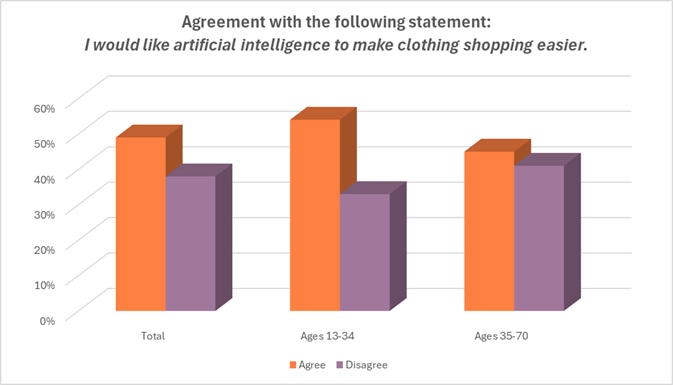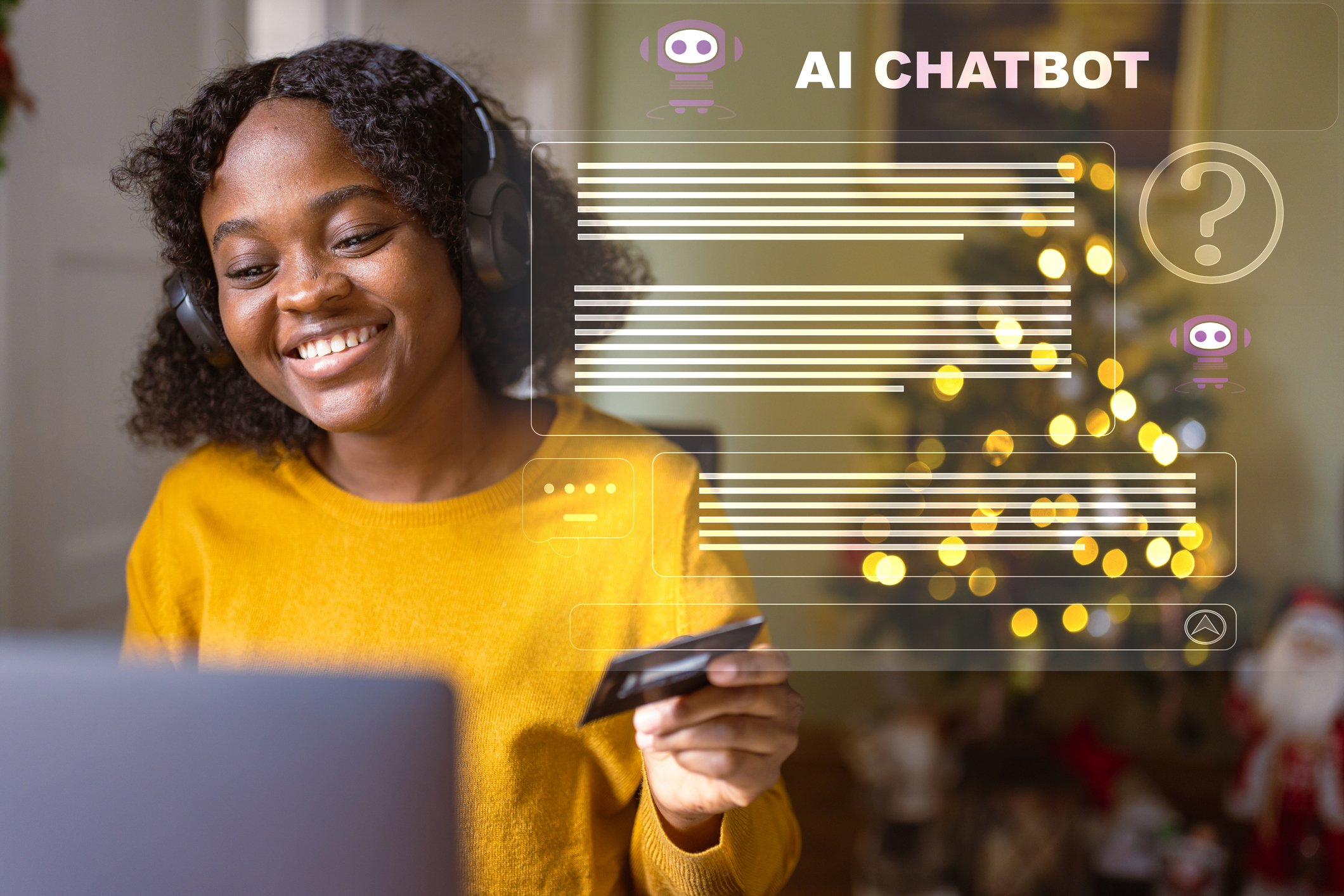The holiday shopping season has begun, and it may be a tough season this year, based on earlier forecasts. As always, retailers are going all out to attract shoppers both online and in-store. That’s why it may not be surprising to find that stores and brands are turning to artificial intelligence (AI) for help this year.
When you’re juggling global suppliers, shifting policies, and shoppers who want everything faster and cheaper, spreadsheets alone just don’t cut it. That’s why, for many, AI can become a real competitive advantage, helping them make smarter decisions faster as they head into the busiest time of year.
Brian McCarthy, Deloitte Consulting
Coresight Research’s John Harmon, managing director of technology research, says there are several ways that retailers and brands can use AI this season to optimize holiday campaigns and inventory planning, even though the Christmas shopping season is already underway.
“Generative AI excels at creating text, images and video, and retailers and brands can use GenAI to create personalized communications such as webpages, emails and text messages – offering personalization at scale,” Harmon told the Lifestyle Monitor™ in an interview. “AI/machine learning is a core technology for demand forecasting and inventory planning, including allocation, assortment, replenishment and pricing, putting the right item at the right location at the right time.”
Jonathan Arena, co-founder of New Generation (New Gen), a tech company that builds AI infrastructure for brands, says this is really the first holiday where AI is key for running retail businesses.
“The biggest advantage right now is visibility into how shoppers are actually searching for products using natural language during key holiday moments,” Arena told the Lifestyle Monitor™in an interview. “Retailers can now see the intent behind those AI-driven searches, like what people are asking for, how they describe it, and what that means for inventory. When brands make their product data readable to AI, they can react faster and plan campaigns that meet customers where they are now, not where they were last year.”
Companies that use AI can also endear themselves to consumers. Consider that more than half of all shoppers (54 percent) say they are impressed when companies use artificial intelligence to help them find products they like, according to the Cotton Incorporated 2024 Lifestyle Monitor™ Survey. The survey completes 500 interviews per month with U.S. consumers between the ages of 13 and 70.
Nearly half of all shoppers (49 percent) say they would like artificial intelligence to make clothes shopping easier, according to the Monitor™ research. In 2024, 17 percent of surveyed U.S. consumers say they use generative AI to get personalized product recommendations. Men (21 percent) are more likely than women (15 percent) to have used AI for product recommendations.

Perhaps not surprisingly, the younger set is quicker to adopt AI technology: 23 percent of consumers aged 13-to-34 say they use generative AI for product recommendations compared to 14 percent of those between 35 and 70, according to the Monitor™ research. Men (59 percent) are more inclined than women (42 percent) to use it.
Deloitte Consulting’s Brian McCarthy says the pressure is on retailers, especially with so much uncertainty in the air. The firm surveyed 50 retail buyers about their strategies for the busiest time of year. Of those surveyed, 78 percent said they are turning to AI to improve buying activities in response to changes in trade policy. Another 74 percent said they’re using AI-enabled tools specifically to address those changes.
“The top three use cases include managing supply chains, optimizing prices and managing inventory,” McCarthy says. “In other words, AI is helping retailers figure out what to buy, where to get it, how much to charge and how much to stock. When you’re juggling global suppliers, shifting policies, and shoppers who want everything faster and cheaper, spreadsheets alone just don’t cut it. That’s why, for many, AI can become a real competitive advantage, helping them make smarter decisions faster as they head into the busiest time of year.”
Coresight’s Harmon gave another example to the Lifestyle Monitor™ of how AI can help the apparel sector itself and its customers.
“Retailers and brands need to expose the information on their product pages and elsewhere to make the information findable by AI chatbots such as ChatGPT,” Harmon stated. “A recent Coresight Research U.S. consumer survey found that more than half of U.S. consumers plan to use AI chatbots for shopping assistance this holiday season, and several retailers and marketplaces such as Etsy and Walmart have announced partnerships with OpenAI. Marketplace tool vendors Shopify and Salesforce have also announced partnerships.”
New Gen’s Arena agreed that if shoppers are turning to AI tools like ChatGPT or Gemini for the shopping journey,brands now have to think about being discoverable to both humans and AI assistants.
“Brands need to start understanding AI user journeys right away, especially those that begin in places like ChatGPT and ultimately end on their site,” Arena said. “This is quickly becoming the most important customer journey on the internet.”
Salesforce says agentic AI will take traditional AI’s ability to analyze content a step further by pairing it with the ability to be conversational, and act and react autonomously.
“For example, in prior years, you may have used traditional AI to analyze past data in order to predict the popularity of certain products,” Salesforce explains in its 2025 holiday planning guide. “However, after that, your marketing teams would have to manually create a marketing campaign. Now, with agentic AI, you can simply ask an agent to create a campaign in the way you’d ask a peer. A marketing associate can prompt the system by asking it to do something like ‘create a new eco-conscious campaign for Gen Z loyalty customers.’ An agent would create the campaign, identify the right customer segments (based on past behaviors and preferences), generate campaign assets, and select channels and timing.’”
The relatively quick adoption of AI by consumers is remarkable, considering that just a few short years ago, 4 in 10 shoppers said they were unwilling to let brands and retailers use their online browsing and purchase history to deliver personalized ad content and shopping recommendations, according to 2021 Monitor™ research (n=500).
“The best results come from combining predictive AI with traditional seasonal patterns,” Arena said. “What’s exciting is the speed of insight. AI can now detect changes in consumer intent, through search, social, or conversational data, before sales numbers do. That gives brands a head start to rebalance inventory and reduce overproduction during those unpredictable holiday surges.”
